This article was co-authored by Lisa Bryant, ND. Dr. Lisa Bryant is Licensed Naturopathic Physician and natural medicine expert based in Portland, Oregon. She earned a Doctorate of Naturopathic Medicine from the National College of Natural Medicine in Portland, Oregon and completed her residency in Naturopathic Family Medicine there in 2014.
There are 19 references cited in this article, which can be found at the bottom of the page.
This article has been viewed 51,288 times.
While arthritis is always a pain to deal with, it can be a particular problem if it affects your feet. This can make getting around difficult, so managing your symptoms is very important. Don’t worry! While you can't cure it, there are luckily a lot of things you can do every day to relieve your pain, and many of them are completely natural. Taking the right steps can keep you moving around easier so arthritis doesn’t get in the way of your life. If you try these remedies and don’t notice any improvement, then talk to your doctor for more treatment options.
Steps
Herbs and Supplements
A quick internet search shows that there are plenty of natural remedies for arthritis. While research is mixed, some of these do show success in reducing pain. Particularly, many herbs can reduce joint inflammation, which is a major cause of arthritis pain. If you’d like to try some alternative treatments, then these might work for you. Just remember to ask your doctor before starting on any herbal supplements to make sure they’re safe for you.
-
1Take glucosamine and chondroitin supplements for osteoarthritis. These 2 ingredients are usually included in the same supplement, and these products do show success in relieving osteoarthritis pain. Try taking a daily supplement according to the dosing instructions to see if this helps.[1]
- These compounds could also come in separate supplements. They also work individually.
- Glucosamine could come from fish sources, so don’t take it if you’re allergic to seafood.
-
2Add turmeric to your food. This tasty Asian spice contains curcumin, a natural anti-inflammatory compound. Since inflammation is a big part of osteoarthritis, this might help you. You can add powdered turmeric to your food to get this nutrient and enjoy a unique flavor at the same time.[2]
- Turmeric is safe in high doses, even up to 8 g per day. However, this will probably cause some stomach problems like diarrhea or bloating.
- You can also take curcumin supplements for a stronger dose. A 500 mg daily supplement helped relieve arthritis pain in one study.
Advertisement -
3Relieve pain with SAM-e. This supplement can reduce inflammation and also has an analgesic effect, meaning it can numb the pain as well. This could possibly work as well as pain relievers to reduce your symptoms. SAM-e works best for osteoarthritis, but could also relieve rheumatoid arthritis pain.[3]
- For arthritis pain relief, the recommended SAM-e dosage is 1,200 mg per day.[4]
-
4Try Boswellia Serrata to reduce inflammation. This herb also shows some success in reducing pain and inflammation from both rheumatoid and osteoarthritis.[5]
- Recommended doses for Boswellia range from 150-250 mg per day. Follow the dosing instructions on the product that you use.
-
5Apply capsaicin cream to your feet. Capsaicin is an ingredient in cayenne pepper. Putting pepper on your feet probably sounds strange, but this ingredient does seem to reduce pain for people with both rheumatoid and osteoarthritis. Try getting a cream with capsaicin in it and applying it daily to see if this works for you.[6]
Exercising Your Feet
While all types of arthritis can make moving around difficult, regular exercise is one of the best treatments. It strengthens your joints and helps you maintain flexibility, which can make you feel much better. You could maintain your mobility much longer if you stay as active as possible. Here are some exercises that should help with arthritis in your feet.
-
1Do easy, low-impact exercises every day. You might not feel like moving too much if your arthritis is acting up, but staying still is actually worse. Light exercise keeps your joints loose and can decrease your pain. Try doing some low-impact exercise every day to loosen yourself up.[7]
- Water exercises and aerobics are especially good for people with arthritis because they’re very low-impact.
- Start slow when you exercise. This way, you’ll find your limits and avoid overdoing it by exercising too hard.
-
2Stretch your feet and toes to keep everything loose. This gets your feet ready for exercise and reduces soreness. Gently pull your toes back with your hands to stretch the arches of your feet. Hold them in place for 15-30 seconds. Then press your toes down to stretch the top of your foot.[8]
- Remember to stretch out both feet equally.
- Calf stretches are also helpful to keep your ankles loose. Try putting the ball of your foot on a large book or step and pressing your heel down to stretch out your calf.
-
3Trace the letters of the alphabet on the floor with your toes. This might sound weird, but it’s a great way to boost flexibility in your feet. Sit on a chair with both feet on the floor. Then lift the heel on one foot and start tracing the alphabet on the floor with your toes. Switch feet when you’re finished.[9]
-
4Roll a towel up with your toes. This is another good exercise to boost the flexibility in your feet. While sitting, put a towel flat on the floor and lay one foot on top of it. Scrunch your toes to roll the towel up, then push it back by rolling your toes the other way. Repeat this 8-12 times, then switch feet.[10]
-
5Strengthen your ankle with foot flexes. Take a rubber exercise band and loop it around one foot. Secure the other end to a doorway, or let someone hold it for you. Then hold your leg out straight and flex your foot back and forth 8-12 times. Switch feet when you’re done.[11]
- If you need suggestions for a good exercise band, as your doctor or physical therapist.
Dietary Tips
There’s no magic diet that will cure arthritis, but what you eat still has a big impact on your health. A generally healthy diet can reduce inflammation in your body and relieve your pain over time. The following dietary changes could help you manage your symptoms better.
-
1Eat plenty of healthy fatty acids. Fatty acids, especially omega-3s, are natural anti-inflammatories and can reduce joint pain from arthritis. Include plenty of foods rich in healthy fatty acids in your diet.[12]
- Omega-3s appear to be especially beneficial for people with rheumatoid arthritis.
- The best sources of healthy fatty acids are fish, flaxseeds, and olive oils.
- You can also get omega-3s from fish oil supplements. Ask your doctor if taking these would be a good idea for you.
-
2Include foods high in vitamin C if you have rheumatoid arthritis. Vitamin C seems to relieve rheumatoid arthritis specifically, so mix in plenty of bell peppers, citrus fruits, and leafy green vegetables each day.[13]
- Fruits and vegetables are also good for non-rheumatoid arthritis because they tend to reduce inflammation throughout your body. They’re an important part of any anti-arthritis diet.[14]
-
3Get enough vitamin D every day. A vitamin D deficiency could trigger both rheumatoid and osteoarthritis, and also make your symptoms worse. Doctors recommend getting at least 600-1,000 IUs (international units) per day from your diet or supplements.[15]
- Foods with vitamin D include fish, eggs, fortified dairy products, and orange juice.
- Vitamin D deficiencies are common because not many foods contain high amounts of it. Your doctor may suggest that you take a vitamin supplement if you’re not getting enough from your diet.
-
4Avoid saturated and trans fats. These unhealthy fats tend to increase inflammation in your body. Reduce the amount of fried and processed foods that you eat to cut out trans and saturated fats.[16]
- Monounsaturated fats, however, seem to reduce inflammation. You can get these from healthy vegetable oils.
-
5Reduce sugar in your diet. Processed sugar also can increase inflammation in your body and make your pain worse. Avoid sugary desserts and drinks as much as possible.[17]
- Other foods can also have a lot of added sugar. Check nutrition labels before you buy anything. You might be surprised to see how much sugar some foods have.
-
6Follow the Mediterranean diet for a clear guide. The Mediterranean diet is particularly anti-inflammatory and can help people with arthritis. This diet focuses on fresh fruits and vegetables, healthy oils, fish, and whole grains, while cutting out fatty and processed foods. If you want a concrete guide for an arthritis-fighting diet, then this is a great place to start.[18]
Lifestyle Changes
When you have arthritis, you have to take steps every day to manage your symptoms. This is especially important with arthritis in your feet. Luckily, a few simple changes can relieve your pain and keep you mobile, regardless of what type of arthritis you have. Try these tips to keep yourself moving every day.
-
1Soothe your feet with a warm soak. When your feet are sore, heat can relieve the pain. Try filling a bucket with warm water and soaking your feet. You could also apply a hot towel or compress if you prefer. Apply the heat for 20 minutes at a time for the best results.[19]
- A heat treatment is also a good way to warm up before you exercise. This loosens your muscles and joints, which could prevent soreness later on.
-
2Reduce inflammation after activity with cold packs. If you’ve just exercised or spent the day walking a lot, then cold is the best treatment. Hold an ice or cold pack against your feet for 20 minutes at a time to reduce inflammation and pain.[20]
-
3Massage your feet when they’re sore. This is an easy at-home treatment that most people can do easily. Lightly rub the sore spots on your feet to relieve the pain. A firmer massage using a kneading motion might also help, especially if your arches are sore.[21]
- Professional foot massages might also help, so you can try booking a session to see if this works for you.
-
4Wear orthotic shoes for more support. Orthotics are special shoes or inserts that offer better cushioning and support. Your doctor can write you a prescription for these, so ask them about getting the right type for you.[22]
-
5Maintain a healthy body weight. Since your feet carry all your body weight, being overweight could make you feel much worse. Talk to your doctor about an ideal weight loss program and do your best to reach a healthy weight.[23]
-
6Quit smoking. Smoking can degrade the cushioning in your joints and make arthritis much worse. If you smoke, then quitting as soon as possible is the best choice. If not, then don’t start in the first place.[24]
- Secondhand smoke can also be harmful, so don’t let anyone smoke in your home either.
-
7See if acupuncture helps. Many people with arthritis experience pain relief during acupuncture treatments. This just might work for you, so try booking a session and finding out for yourself.[25]
- Always visit a licensed and experienced acupuncturist so you know you’re receiving the best treatment possible.
-
8Try mindfulness meditation to reduce your pain. This doesn’t work for everyone, but relaxation and stress reduction could bring you relief from your arthritis pain. Try spending some time each day sitting quietly, clearing your mind, and focusing on your breathing. Over time, this might reduce your stress and pain.[26]
- This doesn’t work quickly, so you have to be consistent with it every day to notice results.
- Other mindfulness exercises like yoga or tai chi seem to help as well. You can try these too if you want to.
Medical Takeaways
Unfortunately, there's no cure for arthritis, and it's a pain to deal with, especially in your feet. Luckily, there are many natural steps you can take to get some relief. Regular exercise, the right diet, and a few alternative treatments could make a big difference. If these don’t work for you, then your doctor can recommend further treatments.
References
- ↑ https://www.health.harvard.edu/nutrition/can-diet-improve-arthritis-symptoms
- ↑ https://www.health.harvard.edu/blog/curcumin-for-arthritis-does-it-really-work-2019111218290
- ↑ https://www.arthritis.org/health-wellness/treatment/complementary-therapies/supplements-and-vitamins/9-supplements-for-arthritis
- ↑ https://www.drugs.com/npp/same.html
- ↑ https://www.ncbi.nlm.nih.gov/pmc/articles/PMC3309643/
- ↑ https://www.arthritis.org/health-wellness/treatment/complementary-therapies/supplements-and-vitamins/9-supplements-for-arthritis
- ↑ https://www.rheumatology.org/I-Am-A/Patient-Caregiver/Diseases-Conditions/Living-Well-with-Rheumatic-Disease/Exercise-and-Arthritis
- ↑ https://healthy.kaiserpermanente.org/health-wellness/health-encyclopedia/he.foot-arthritis-exercises.bo1546
- ↑ https://myhealth.alberta.ca/Health/aftercareinformation/pages/conditions.aspx?hwid=bo1546
- ↑ https://myhealth.alberta.ca/Health/aftercareinformation/pages/conditions.aspx?hwid=bo1546
- ↑ https://healthy.kaiserpermanente.org/health-wellness/health-encyclopedia/he.foot-arthritis-exercises.bo1546
- ↑ https://health.clevelandclinic.org/four-food-tips-to-improve-your-arthritis-symptoms/
- ↑ https://health.clevelandclinic.org/four-food-tips-to-improve-your-arthritis-symptoms/
- ↑ https://www.health.harvard.edu/nutrition/can-diet-improve-arthritis-symptoms
- ↑ https://www.health.harvard.edu/nutrition/can-diet-improve-arthritis-symptoms
- ↑ https://www.health.harvard.edu/nutrition/can-diet-improve-arthritis-symptoms
- ↑ https://health.clevelandclinic.org/four-food-tips-to-improve-your-arthritis-symptoms/
- ↑ https://www.oafifoundation.com/en/mediterranean-diet-to-protect-you-from-the-osteoarthritis/
- ↑ https://health.mountsinai.org/blog/what-can-i-do-to-decrease-hand-arthritis-symptoms/
- ↑ https://www.arthritis-health.com/treatment/alternative-treatments/applying-heat-vs-cold-arthritic-joint
- ↑ https://www.arthritis.org/health-wellness/treatment/complementary-therapies/natural-therapies/types-of-massage
- ↑ https://www.apma.org/arthritis
- ↑ https://orthoinfo.aaos.org/en/diseases--conditions/arthritis-of-the-foot-and-ankle/
- ↑ https://arthritis.ca/support-education/online-learning/daily-living/smoking-and-arthritis
- ↑ https://creakyjoints.org/alternative-medicine/massage-therapist-tips-for-arthritis/
- ↑ https://www.arthritis.org/health-wellness/treatment/complementary-therapies/natural-therapies/types-of-meditation-for-arthritis
About This Article
To reduce arthritis pain in your feet naturally, you can use ice and heat, make simple changes to your diet, and shop for shoes that won't put pressure on your feet. Reduce pain by applying moist heat to your feet for 15 minutes before physical activity and using ice packs for 15 minutes after to reduce swelling. You can also increase your Omega-3 fatty acids, which can control inflammation, by eating more spinach, walnuts, flaxseed, and eggs. Since arthritic toes are often swollen or misshapen due to inflammation, buy shoes with a wide toe box to avoid putting pressure on your toes. Also, pick shoes with a stiffer sole to reduce flexing and pressure on your feet. For more tips from our Medical co-author, including how to use stretches to relieve arthritis pain in your feet, keep reading!
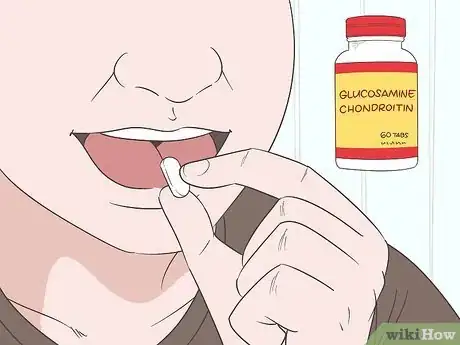
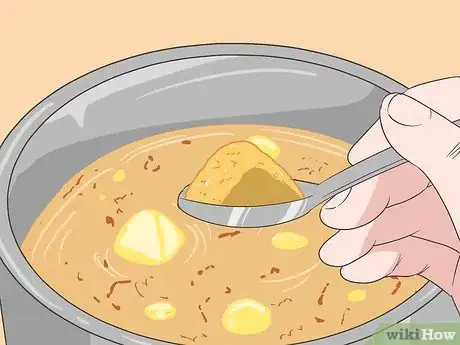
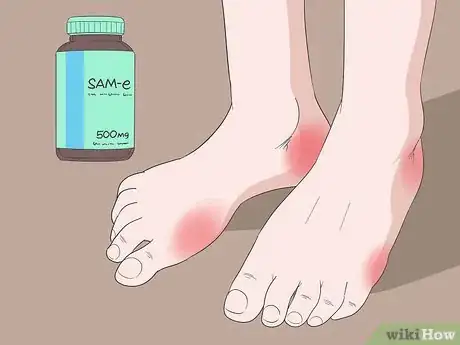

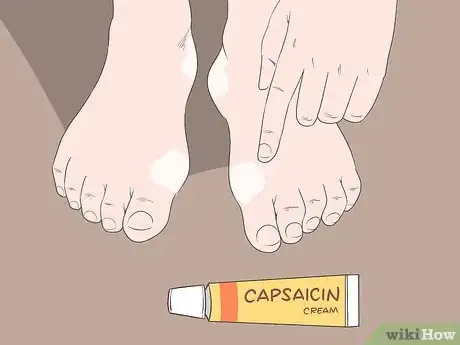
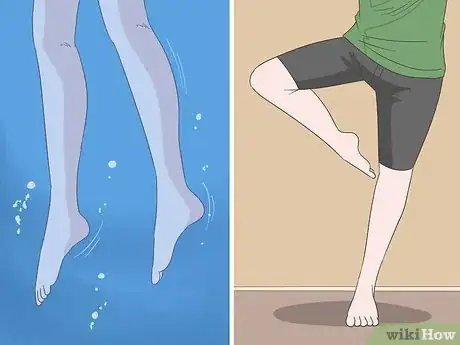

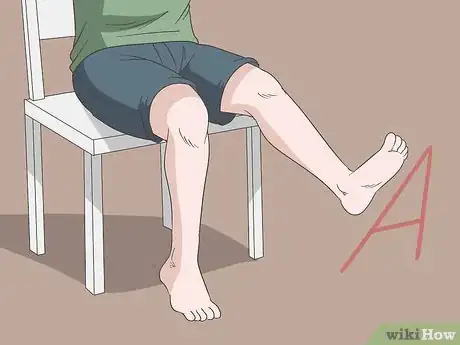
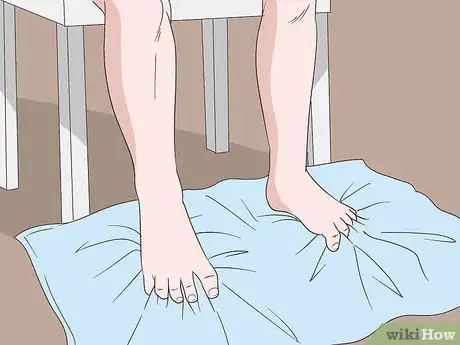
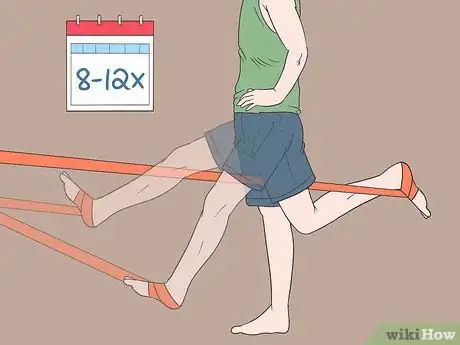

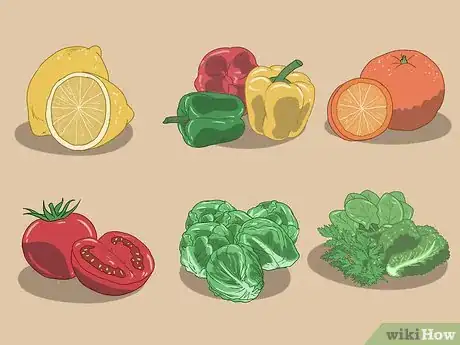
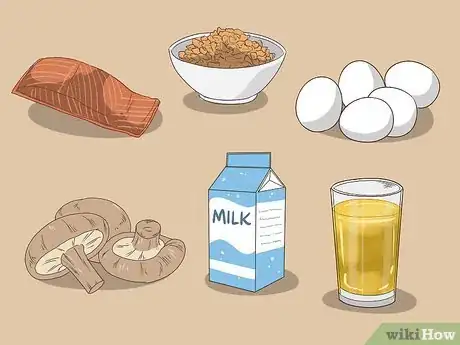
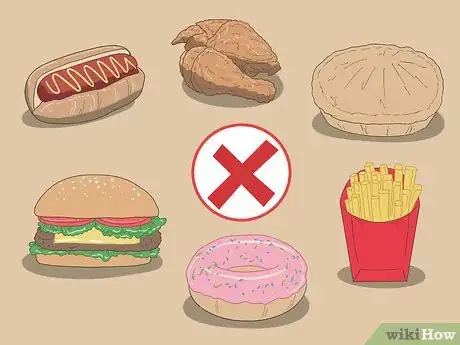
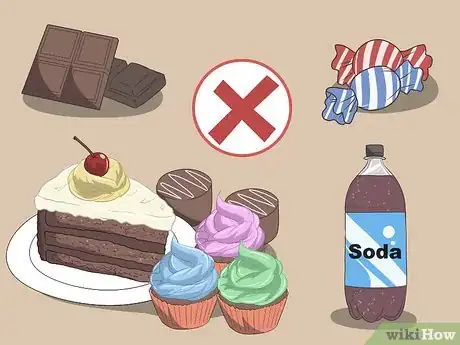
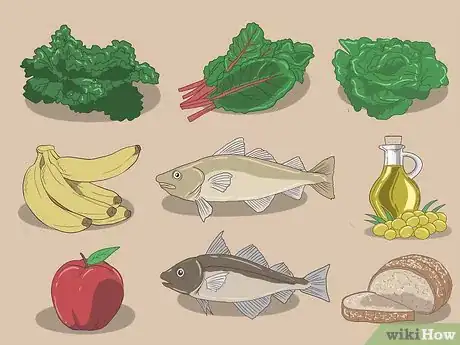
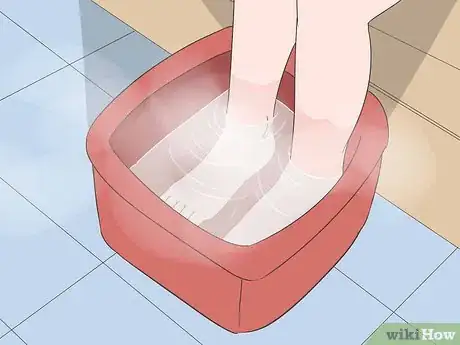
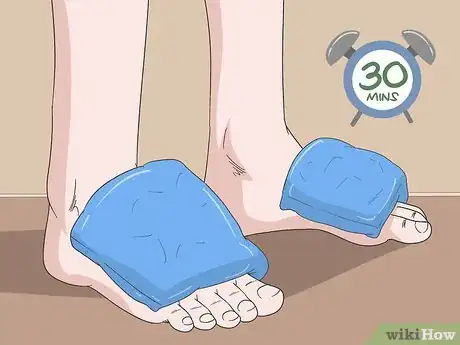
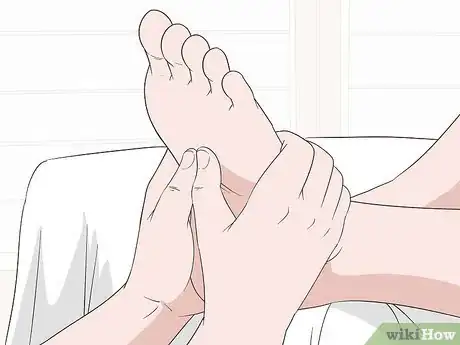
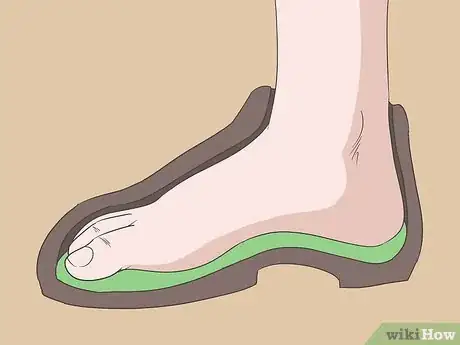
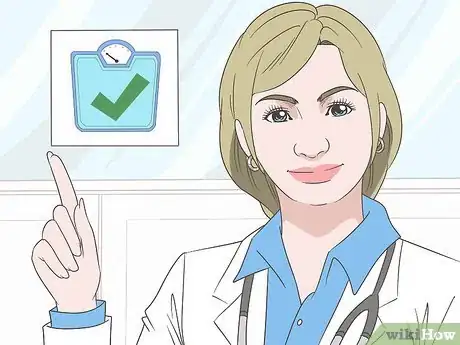
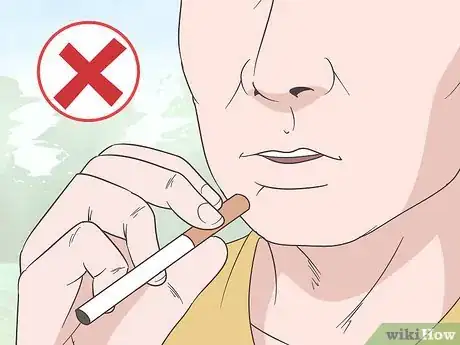
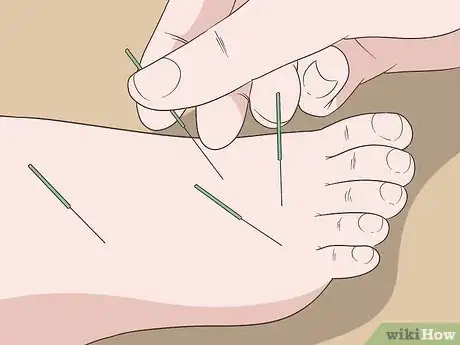
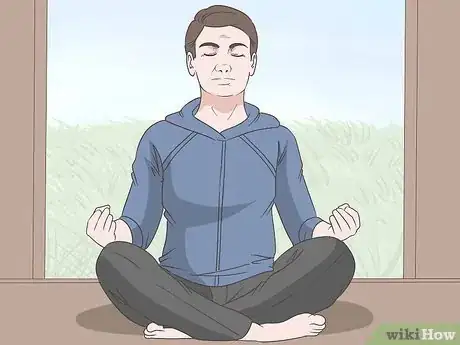


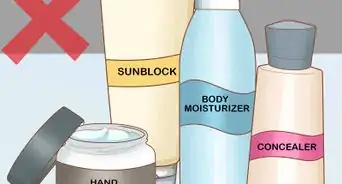




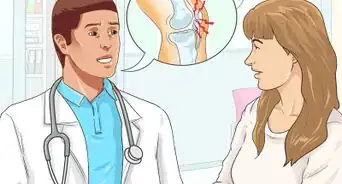


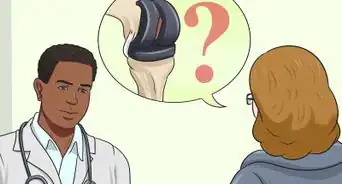
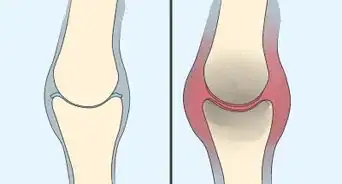














































Medical Disclaimer
The content of this article is not intended to be a substitute for professional medical advice, examination, diagnosis, or treatment. You should always contact your doctor or other qualified healthcare professional before starting, changing, or stopping any kind of health treatment.
Read More...